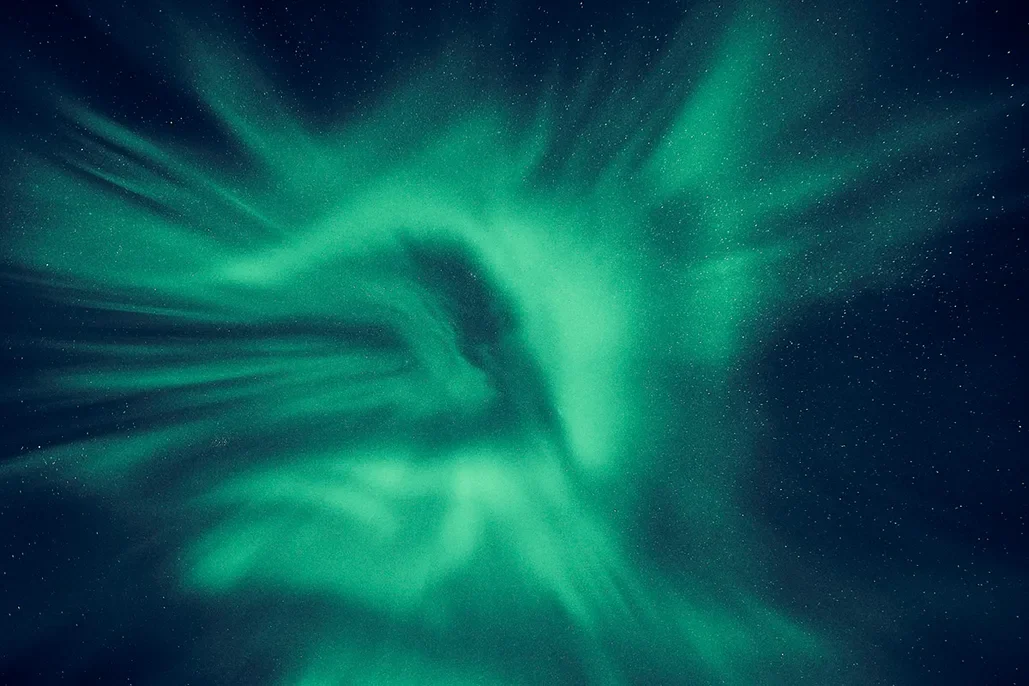
Historic Green Aurora Spotted on Mars: NASA’s Perseverance Rover Captures First Visible-Light Image
In a groundbreaking achievement, NASA's Perseverance rover has made history by capturing the first visible-light image of a green aurora on Mars. This remarkable event, triggered by a significant solar flare and coronal mass ejection (CME) on March 15, 2024, not only expands our understanding of Martian atmospheric phenomena but also offers a tantalizing glimpse of what future astronauts might witness on the Red Planet. The findings were published in a Science Advances study led by Elise Knutsen, a postdoctoral researcher at the University of Oslo in Norway.

The discovery of a green aurora viewed directly from the surface marks a dramatic step forward. While NASA's MAVEN (Mars Atmosphere and Volatile EvolutioN) spacecraft has previously detected solar energetic particle aurorae (SEP) in ultraviolet light from orbit, this marks the first time such an event has been observed in visible light from the Martian surface. The confirmation came from both MAVEN and the European Space Agency's Mars Express mission, highlighting a successful cross-mission collaboration.
On Earth, auroras are caused by charged particles from the Sun interacting with our planet's magnetic field. These particles are funneled toward the poles, where they collide with atmospheric gases, creating the mesmerizing displays of green, red, and purple light we know so well. On Mars, the absence of a global magnetic field results in different types of auroras, such as the solar energetic particle aurora, which illuminates the entire Martian sky when highly energetic particles from the Sun bombard the atmosphere. NASA's MAVEN mission discovered them back in 2014.

The successful capture of the green aurora was no accident. Knutsen and her team carefully calculated the optimal angle for the Perseverance rover's SuperCam spectrometer and Mastcam-Z camera to observe the phenomenon in visible light. Crucially, predicting auroras on Mars involved pinpointing a CME strong enough to inject charged particles into the Martian atmosphere while utilizing forecasts from NASA's Moon to Mars (M2M) Space Weather Analysis Office and the Community Coordinated Modeling Center (CCMC). "The trick was to pick a good CME, one that would accelerate and inject many charged particles into Mars’ atmosphere," Knutsen explained.
This discovery arrives at a time when the sun is near the peak of its solar cycle, leading to more frequent solar storms. According to Spaceweather.com, forecasts suggested that the CME observed on May 15, 2024, directed itself toward Mars, potentially triggering a global aurora display.
The implications of this find are significant for future Martian exploration. As Katie Stack Morgan, acting project scientist for Perseverance at NASA’s Jet Propulsion Laboratory, emphasized, “A better understanding of aurorae and the conditions around Mars that lead to their formation are especially important as we prepare to send human explorers there safely.” This event showcases what the future may hold. Future crews of astronauts on Mars would be able to see aurora from the surface.

What other celestial wonders await discovery on Mars? Will future astronauts be able to confirm and study these auroras directly? Share your thoughts in the comments below.